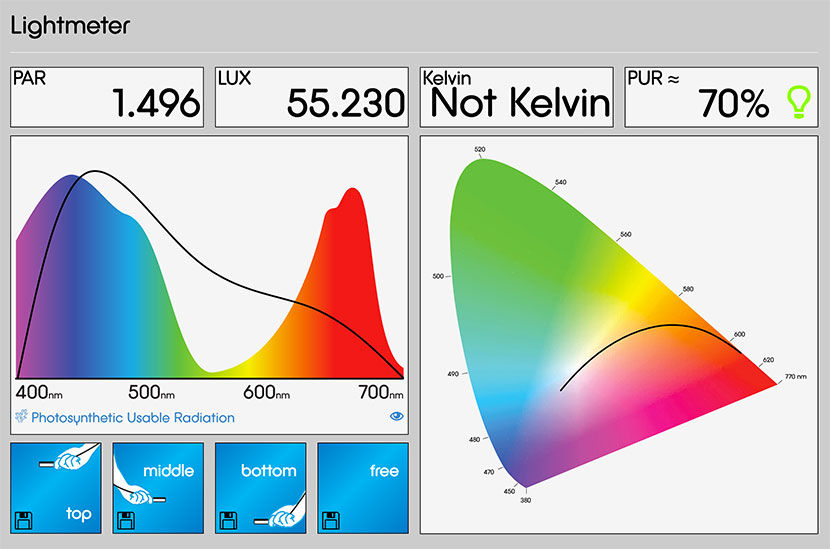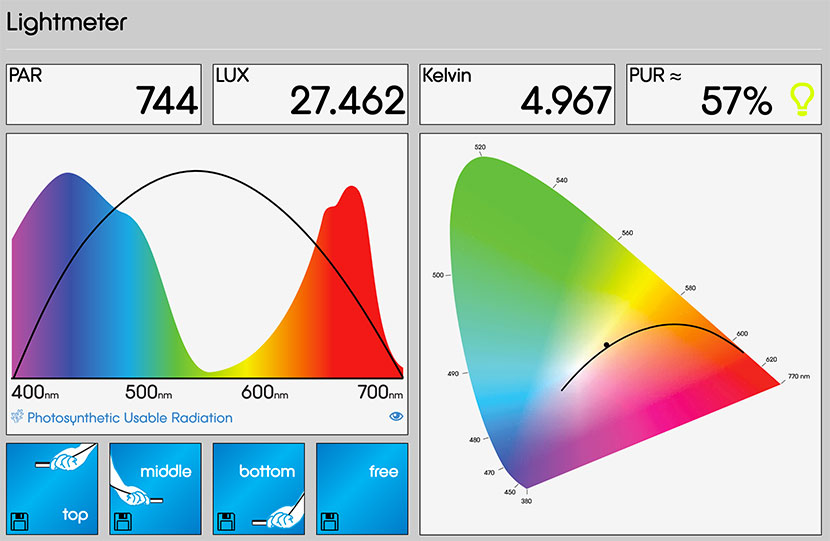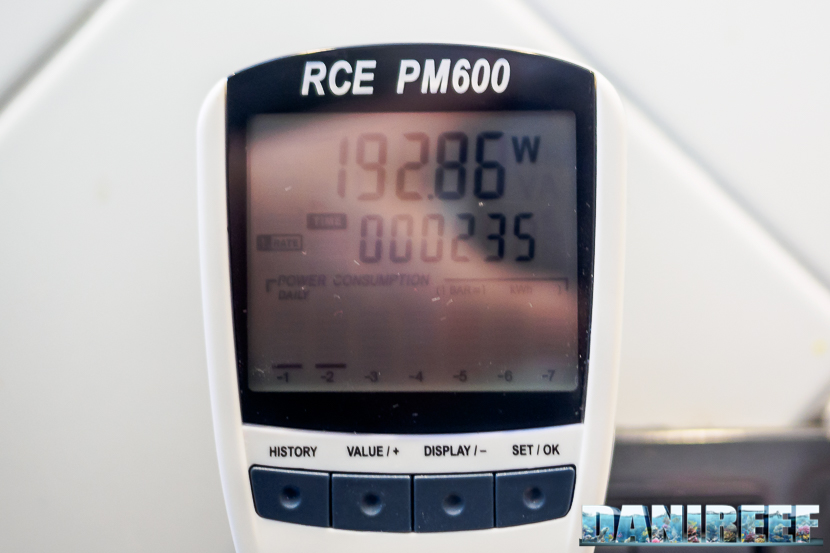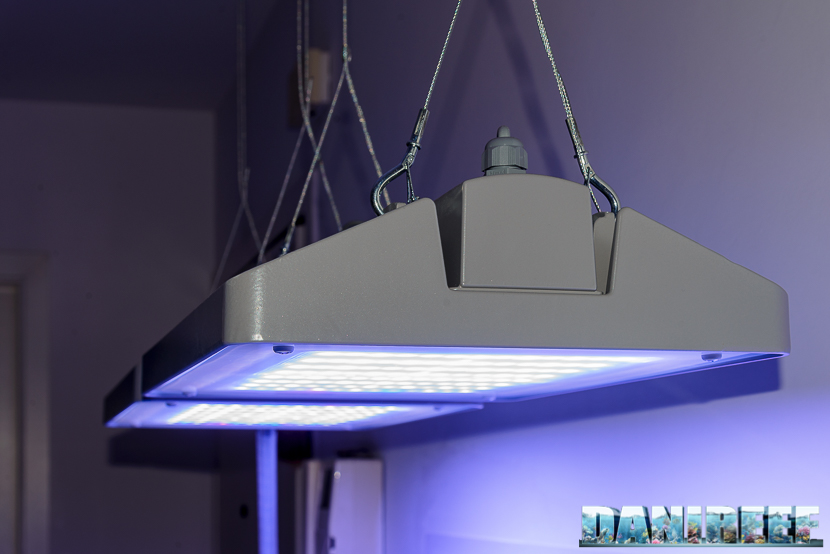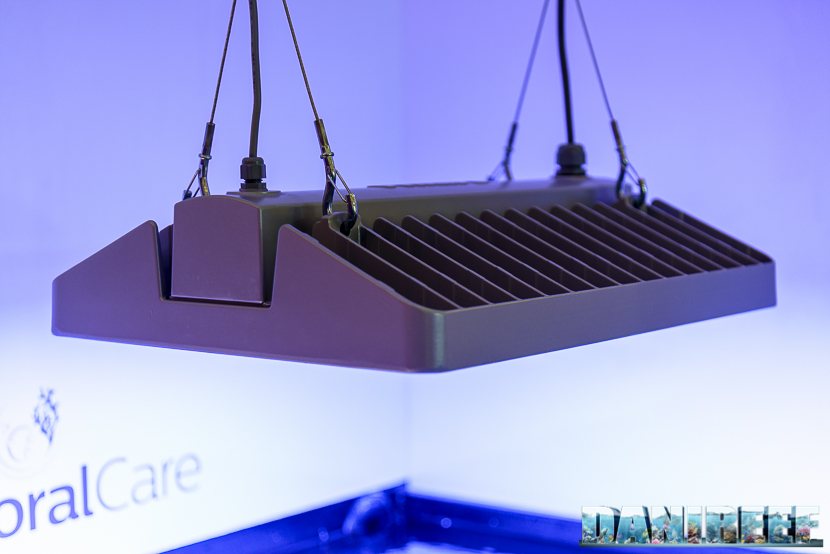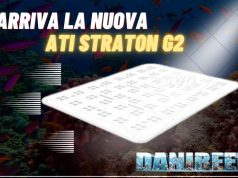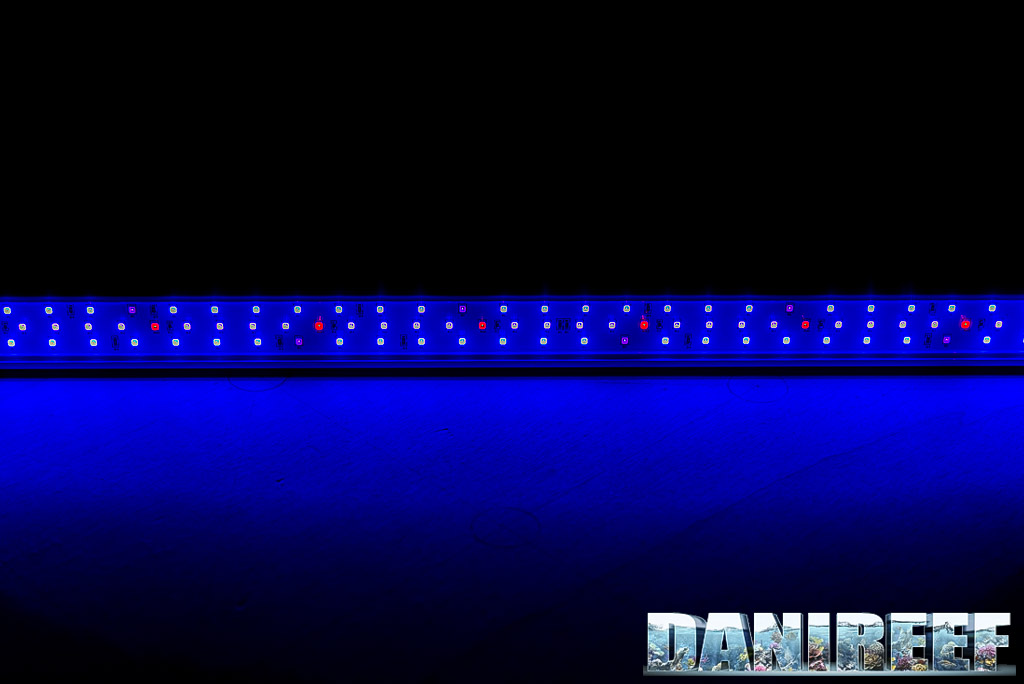Measurement
We can’t say anything definitive about the corals because our aquarium is still in growth these months. But we could do some quick measurements with the system probe Seneye Reef we have reviewed some times ago, whose software has been lately upgraded: the compartment of the luxmeter got better and the PUR has been included in the PAR sensor.
We have done three measurements, all from the middle of the ceiling light in uniformity with others ceiling lights. We stood about 20 cm of distance from the ceiling light and we registered its maximum power, and then the maximum expressed by just the channel 1 and the channel 2.
As you can see in the graphic the obtained measurements have been:
- PAR: 1.496
- Lux: 55.230
- PUR: 70%
With just the white range we obtained:
- PAR: 744
- Lux: 27.462
- PUR: 57%
- Kelvin 4.967
With just the blue range we obtained:
- PAR: 754
- Lux: 27.844
- PUR: 84%
It’ s possible to see the simplified curve of the two channels and of the resulting one. It’s immediately clear how the calibration of the channel 1, with the blue range, expresses the same component od PAR and LUX, and a more elevated PUR level (+47%).
The comparison with other ceiling lamps
Obviously we have to consider these results with he measurements done on comparable ceiling lights. For example the GNC 466, here the review, registered a value of 696 PAR and 25.697 Lux. Almost doubled.
But the confrontation with a Radion G2 PRO, here our review, (only in italian for now, sorry), the most recent Radion we could test, at the middle of the ceiling light has 2.117 PAR, 78.049 Lux and PUR del 72%. These values are higher but they haven’t to make us forget that Radions are Cluster ceiling lights, so they structurally have very high values at the middle, but they fastly decay, differently from this Philips CoralCare and the GNC 466, which have their leds on a wider surface.
From the point of view of aquarium cover the last two are better than every Radion. But these are executive choices that you may prefer or not.
Consumption
The survey of the instant consumption is possible thanks to the practical RCE PM600 that can measure also the power factor (cosφ). The result is directly given in watt.
The calculation of the absorbed current is:
Philips CoralCare ceiling light: 193 watt
The same declared value of 190 w (+1,6%).
Price and cost/watt relationship
The Philips CoralCare costs 749 euros.
The absorbed power is 193 watt, so it has a relationship between cost/watt of 3,88 euros for each watt. The best value we’ve ever registered until today. Comparing it with the other ceiling light we had, the Ceab Slide&Led had 9 euros for watt, while the GNC AM 466 had an adverse value of 13,3 euros for watt, the Radions had between 4,64 and 4,93, depending on the considered type, and the OceanLed Sunrise 600 had 4,83 euros for watt.
Partial conclusions
We can’t write proper conclusions because we still haven’t had the time to finish the test in our aquarium, but anyway we can tell you what we have thought until now.
The ceiling light is well built, solid, impressive and has a cost per watt in the best ones of the category. Stylistically isn’t in the most beautiful, but it does a great job, it’s very powerful and easy to be set.
The specific power is very high and, thanks to the measurements done, it should easily cover a surface of 100×80 (as it has been declared) for less demanding corals and 80×60 for demanding corals.
We’ll talk about it again, but if you have any questions, we are ready for you.







